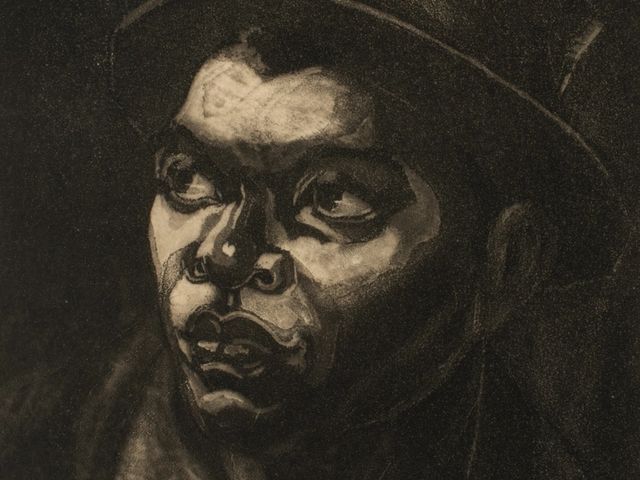(American, 1893–1965)
Dox Thrash was a prolific printmaker who settled in Philadelphia in the 1920s. In 1937, at the height of the Great Depression, he became the first Black artist to work for the Fine Print Workshop of Philadelphia, a branch of the Works Progress Administration (WPA), a federal relief program designed to employ hundreds of artists and share their work with the public. In the prints he created at the Workshop and beyond, Thrash explored the rich artistic potential he found in the ordinary rhythms of social life around him. He created images of everyday life in Black America—from scenes of his hometown in Griffin, Georgia, to stirring portraits of his neighbors in Philadelphia. Today, these prints form a cornerstone of the museum’s print collection.
Within his first year at Philadelphia’s Fine Print Workshop, Thrash worked with colleagues Michael Gallagher and Hubert Mesibov to invent a printmaking process. He discovered that Carborundum, a gritty commercial abrasive, could be used to roughen the surface of a copper printing plate, enabling it to hold a significant amount of ink across its evenly pitted surface. A printmaker could then use tools to selectively smooth areas of the plate to compose an image. While most printmakers start with a blank plate to which they add marks, Thrash’s method proceeds in the opposite manner, working from dark to light. Working in this way, Thrash achieved the inky blacks, silvery grays, and translucent whites that give power to his prints.
Learn more about efforts to preserve the historic Dox Thrash House in the Sharswood neighborhood of Philadelphia.
